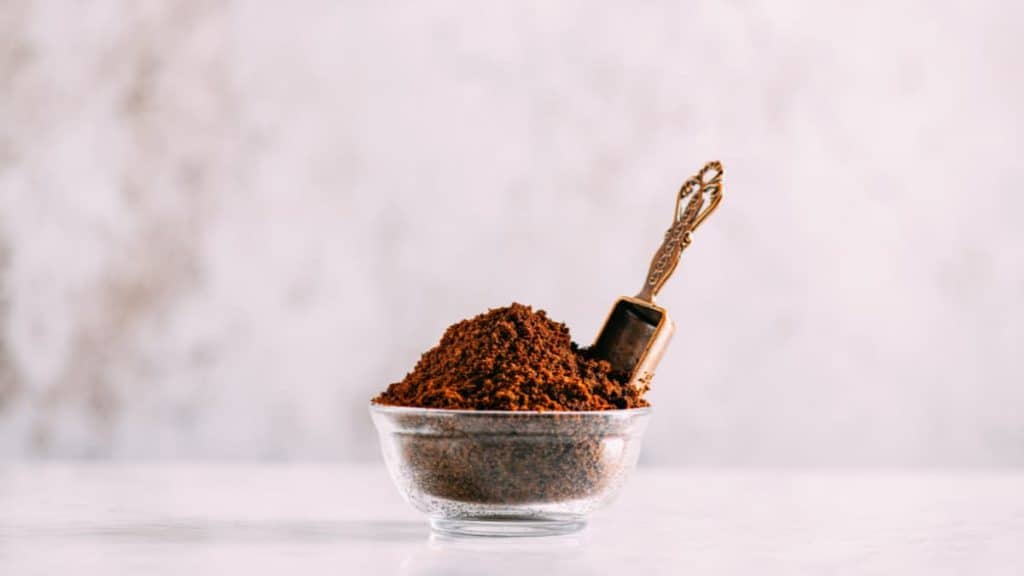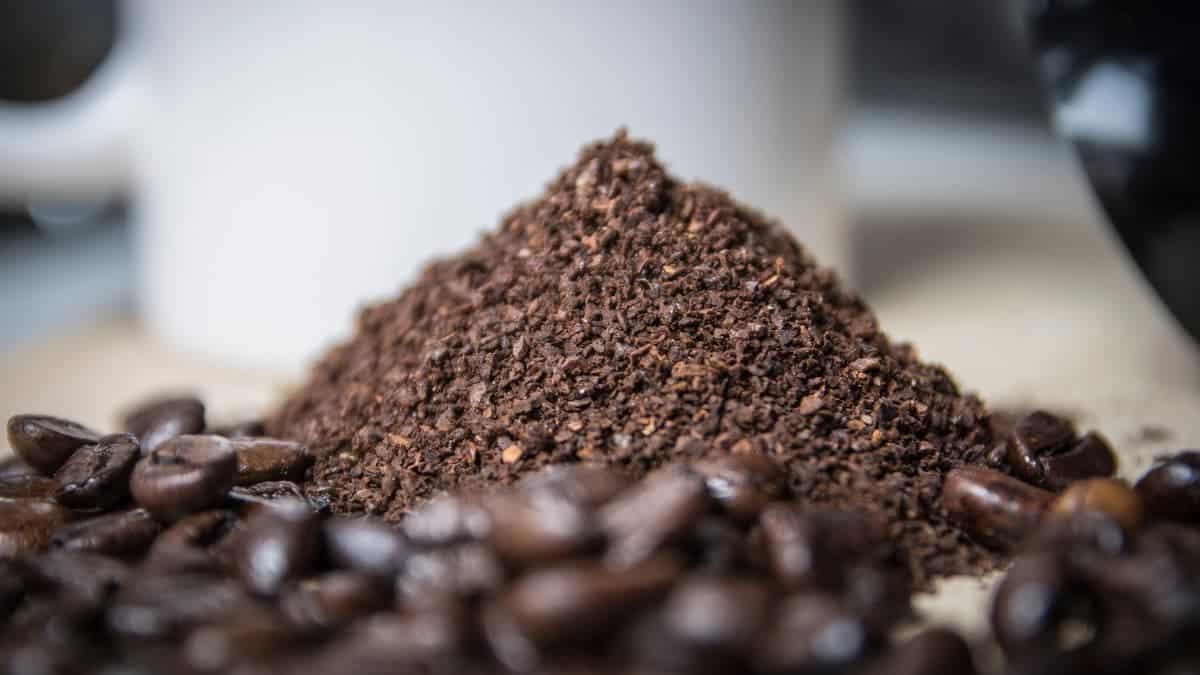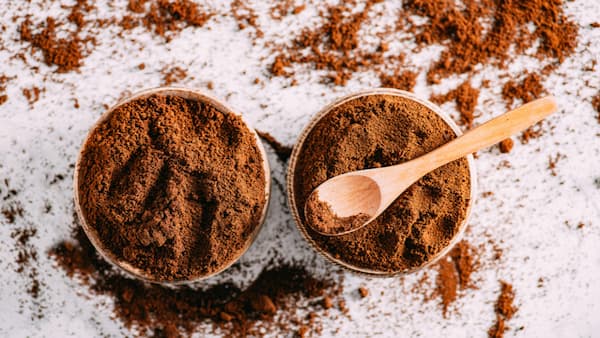Does Coffee Have Roaches?
It turns your stomach to even think about it.
Could your coffee, that steaming cup of hot goodness in your hands, actually have cockroaches in it? It’s a horrifying thought, but it’s worth talking about.
What do the experts say? Does coffee have roaches or other bugs? And even more important, does the coffee you buy have cockroaches? And if it does, what can you do about it?

Yes, There Are Bugs in Food
Could you be drinking cockroaches or bugs in your morning cup of coffee?
This is a hard reality to face. But yes, bugs are in your food. And we’re not just talking about Mexican grasshoppers, or chapulines, that chefs might add to your exotic tacos.
Sometimes unwanted bugs get into the foods you consume when they’re processed. And as shocking as it sounds, sometimes the bugs are there on purpose.
How could bugs be in your food on purpose?
Bugs are at times added to your food as colorants. You might have heard of cochineal bugs, which give off a red color that has been used for many centuries to dye fabrics and cosmetics.
These bugs thrive on cactus in Central and South America, and as they consume the fruit of cactus their bodies turn a bright red.
Cochineal farmers harvest the bugs from the cacti and dry them. Once dried, their bodies are crushed and water is added, which creates a red liquid.
The liquid may go through an additional process to purify it, and the resulting liquid is called carmine.
What you might not realize is that those cochineal insects are also used to color food items.
The bright red liquid can be used to color any foods, since it’s a convenient way to add long-lasting color with no flavor alterations.
What foods get a touch of cochineal dye? Any pink or red food items such as cakes, cookies, drinks, or icings.
And coffee-based drinks. Yes, in times past you could even find cochineal dye lending color to your pink Starbucks Frappuccinos and other red-toned foods like red velvet cake.
As it came to light, Starbucks customers reacted.
The yuck factor for many consumers of the delicate-colored drink reached an uncomfortable level.
Starbucks began to listen to the public rejection of their insect-based colorants and made changes.
Starbucks has now replaced the bugs with other convenient dyes, such as fruit and vegetable juice, in their drinks and foods.
How do you know if those bug parts and bodies are in your foods? Take a close look at the label for anything that says carminic acid, cochineal extract, or carmine.

But what about bugs in coffee?
Beyond the use of bugs for coloring, the reality is that bugs simply wind up in your food.
In fact, it’s widely accepted in the food industry that it’s impossible to completely eliminate food adulterants, including bugs.
Bugs are everywhere, and they are certainly on our food while it’s being grown, harvested, and packaged.
While we prefer not to think about it, we wind up eating a good amount of bugs, roaches, and insect parts in our food and drink.
What products for human consumption might have a small percentage of bug parts?
Anything we eat or drink that’s processed, including beer, chocolate, grains, vegetables, and fruit. And yes, there are bugs in your coffee, too.
Is consuming bugs bad for you? Generally, no. Although there are some people that have allergies to cockroaches, bugs aren’t a health problem for most people.
The FDA accepts the inevitable presence of insects and doesn’t try to eliminate the bug issue, which couldn’t be done anyway for most foods we eat.
Rather than set unrealistic standards, the FDA makes an effort to minimize the insect dilemma.
A small percentage of bugs in your food is considered acceptable, as long as the level is below a certain threshold.
They have specific FDA regulations about the presence of bugs and other unavoidable defects in the products we eat.
Up to now, we’ve been discussing food in general. How about coffee in particular? And even more particularly, roaches. Are there cockroaches in your coffee?
Does Coffee Have Roaches?
We’re sad to say it, but yes, a cup of coffee can have cockroaches. Especially ground coffee, which can frequently contain a (low) certain percentage of cockroaches or other insects.
To process raw products, such as unroasted coffee, there will be an inevitable presence of insects.
In fact, the FDA standards permit up to 10% of green coffee beans to be insect-infested or insect-damaged, and this includes roaches.
This isn’t new – scientists and doctors have been discussing the cockroach and ground coffee issue for many years.
Every once in a while it’ll make the news headlines, and again people discuss the number of cockroaches that could be lurking in your pre-ground coffee.
How do the little critters wind up in your coffee grounds?

How Do Roaches End Up in Coffee?
As I already mentioned, it’s unavoidable in industrial settings, like factories, that roaches and other bugs end up everywhere, and they wind up in our food. Why do cockroaches end up in coffee?
When coffee is processed in large factories, they roast hundreds of pounds of coffee beans at a time.
Once they roast the coffee, the whole coffee beans sit around until they get ground and packaged. While they are waiting to be ground, there is the possibility that they could get infested with cockroaches.
It’s all too easy to envision the scene. While the coffee beans are piled up waiting to be put into bags, the cockroach invasion starts.
As the days pass, more cockroaches may arrive. Then it comes time for grinding. But no one checks to make sure the beans are free of cockroaches before grinding the coffee.
They put both beans and cockroaches through the grinder together, and you get that famous coffee grounds and cockroach combination.
The good news is that you can completely avoid this cockroach dilemma.
Grind Coffee Fresh to Avoid Roaches
As you can see from what I just outlined, cockroaches get into the coffee after it’s roasted and before its ground.
There are a few ways to make sure that the coffee you’re drinking doesn’t have a heaping serving of ground-up cockroaches, too.
Here’s a quick list of what you can do to avoid cockroaches in coffee:
- Visit the roaster
- Buy from companies you trust
- Buy whole bean coffee only
First, buy from a coffee shop or company that you trust. Smaller roasters with a good reputation are more likely to keep their factories clean and free of cockroaches.
With some small local roasters, you might be able to pop by, check out their roastery, and see for yourself how they process coffee.
I do that often, and I’m happy that I can buy coffee from small shops where I can see the roasting area.
I can see where the coffee is stored, ask them how long the coffee has been there, and see when the coffee is ground. With this option, you can check out the cleanliness for yourself, and rest assured that your cup of coffee is cockroach-free.
If visiting the roastery is not an option for you, you can still minimize the cockroach issue. Again, make sure that you purchase coffee from conscientious roasters or coffee shops.
That involves avoiding companies that are just trying to make a profit on the cheapest products available and may have factories that are infested with cockroaches.
These types of companies, which put quality last, may allow ground-up cockroaches in coffee grounds. Eurgh!
As I mentioned, the largest part of the problem is when the coffee is left in large piles before it is ground.
When it’s ground with the little critters in the mix, you get the cockroaches in your coffee. If you buy that pre-ground coffee, you’re running the risk of consuming coffee grinds with cockroaches.
To avoid drinking coffee with cockroaches, simplify the process. That way, you eliminate this whole issue.

Top Tip: Always Buy Whole Bean
How do you simplify the process? Buy whole bean coffee instead of pre-ground coffee.
When you buy whole coffee beans, the coffee beans don’t sit around a factory while waiting to be ground.
They can also package the coffee relatively fast. And most importantly, since most consumers would notice if cockroaches were crawling around inside their bag of whole beans, extra care is taken so that doesn’t happen.
If there’s one major takeaway for this cockroach issue, it’s this simple fix: Buy fresh-roasted whole bean coffee.
If you buy coffee fresh from the roaster, with no grinding involved, you know what you’re getting. You can glance at the beans before grinding and know there’s not a cockroach in sight.
That way you can grind, brew, and sip in peace, knowing that no one else is accompanying you in your morning cup of joe.

